#AmericanCars
Rare Rides Personas: Powel Crosley Junior, Tiny Cars, Radio, and Baseball (Part IV)
Powel Crosley Jr. entered a new and much more successful chapter of his life in 1916 when he founded the American Automobile Accessories Company (Americo) alongside Cooper Tire Company founder Ira J. Cooper. One of the earliest large-scale retailers of aftermarket car parts, Americo was a pioneer. The company sold parts made by other firms and manufactured its own parts. Many of the latter were invented by Crosley himself.
After just two years Crosley bought out Cooper’s share of the business and pulled in his younger brother Lewis as a new business partner. Despite not having an eye for the financial part of business, Powel was great at sales, advertising, and anticipating what the consumer wanted and needed most. And what they needed circa 1920 were home radios.
Rare Rides Personas: Powel Crosley Junior, Tiny Cars, Radio, and Baseball (Part III)
We pick up our coverage of the life and times of Powel Crosley Jr. in 1916. At 30 years old, Crosley had a spouse of six years and two young children. He’d given up car-selling ventures in Indiana for a permanent return to his native land of Cincinnati.
His experiences in car sales and hype in Indiana turned the inventor into a marketing man, and Crosley’s main source of income was ad copy. He did that in between short-lived side jobs at small local automotive companies (that all went bust). All the while Crosley kept one eye on the automobile market and took notice of just how common and numerous the automobile had become on American roads. It was almost time for a new car venture.
Rare Rides Personas: Powel Crosley Junior, Tiny Cars, Radio, and Baseball (Part II)
We return today to our coverage of the life and times of Powel Crosley Junior, the first subject in our new Rare Rides Personas series. Born in Cincinnati in 1886, Crosley was the son of a lawyer and the eldest of four. From an early age, he showed adeptness at engineering and technology but lacked an interest in the classroom learning behind it.
He and his brother Lewis built their first car - an EV wagon - at ages 12 and 10 to win a bet with their father. It was the first of many car ventures for Crosley, who was completely fascinated with the up-and-coming automobile. By age 21 he was raising funds to start a car company.
Rare Rides Personas: Powel Crosley Junior, Tiny Cars, Radio, and Baseball (Part I)
Welcome to a new series in the Rare Rides universe, where we’ll spend some digital ink considering the humans behind the automobile experience. This series will focus on the life and times of the industrialists, inventors, engineers, tycoons, and the like who decided to devote a portion of their life to the automobile, whether intentional, accidental, or against their will. Ideally, we’ll proceed with personas first, and then cover their automobiles in a Rare Rides or Icons series.
Our first Rare Rides Personas subject is Powel Crosley Jr., a well-known native of your author’s present city, Cincinnati, Ohio. Commenter Jeff S suggested some Crosley coverage back in May, and here we are a couple of months later with the launch of an all-new series. Onward, to Crosley!
Rare Rides Icons: The History of Stutz, Stop and Go Fast (Part XVII)
We’re back again with more Stutz history, and our coverage of the bric-a-brac produced by the Stutz Neoclassical company as complementary offerings to two-doors like the Blackhawk, Bearcat, and Bearcat II. In our last entry, we covered the Duplex, a sedan that (unsuccessfully) wore Blackhawk styling. Based either on a Pontiac or a Cadillac, the Duplex was the ultimate production version of the Ministeriale prototype sedan built by Carrozzeria Padane.
With an astronomical ask of $32,500 ($251,312 adj.) circa 1970 and styling that hadn’t translated well into a sedan, the Duplex was a non-starter. Just one was ever made, and it was sold to a criminal in Utah. But that didn’t deter CEO James O’Donnell, who was insistent a Stutz sedan was viable. A few years later there was another Stutz sedan presented: IV-Porte.
Rare Rides Icons: The History of Stutz, Stop and Go Fast (Part XVI)
We return to our long-running Stutz historical coverage today, with a few of the odds and ends vehicles that were never the headliners of Stutz’s brand portfolio. During the Seventies and Eighties, the Blackhawk and targa roof Bearcat funded some other fun ideas that occupied the thoughts of company CEO James O’Donnell.
In our last entry, we covered what was perhaps the strangest offering of the latter Stutz entity, a C/K era Suburban that concealed a mounted machine gun in its interior. The armored SUV was subsequently turned into a gun-free dictatorial parade sedan with targa roof, and a trunk. The be-trunked Suburban also donated its shape to an upright regular sedan and six-door funeral transport.
And while the Stutz Suburban takes were intended for foreign heads of state for security and coup d’etat purposes, the Stutz sedans were directed at the company’s more traditional American customer: Someone who feared no peasant uprising but did enjoy flashy styling and lots of elegance. Introducing the Duplex.
Rare Rides Icons: The Lincoln Mark Series Cars, Feeling Continental (Part IX)
Our Lincoln Mark Series coverage continues today, and we pick up at the end of 1958. After Ford dumped many millions into the Continental Division and quickly shut it down, the company then spent a lot more money to develop an all-new unibody platform for Lincoln’s usage. In an attempt to woo customers away from Cadillac, the new Lincolns for 1958 wore some of the most shocking styling ever to come from Detroit.
All three of Lincoln’s new “models” were really just trim levels of the same car. Said models included Capri, Premier, and the top-tier Continental Mark III, which was not a Continental except in trim badges. At least it had a Breezeway window! At the 1958 launch of Lincoln’s new unibody line there was a steep recession across the globe, as lots of Americans decided they didn’t actually need a new car every year or two. Nevertheless, the Continental Mark III made up 62 percent of Lincoln’s sales that year. Lincoln veered off on a revised course in 1959, hoping to improve its lot with some more “new” models.
Rare Rides Icons: The History of Stutz, Stop and Go Fast (Part XV)
Last time in our tale of Stutz the company finally realized its dream of a true convertible, the Bearcat II. The original product dream of CEO James O’Donnell, the Bearcat II went on sale in 1987. Though the company’s fate was pretty much sealed by that time, Stutz had its heyday of models circa the early Eighties. Spoilers: Machine guns were involved.
Rare Rides Icons: The Lincoln Mark Series Cars, Feeling Continental (Part VIII)
With the Continental Division dead, a cost-weary and (newly) publicly traded Ford Motor Company headed into the 1958 model year determined to unveil a solid luxury car showing against its primary rival, Cadillac. However, the “Continental Mark III by Lincoln” was a Continental in name only: It wore the same metal and was produced at the same new factory, Wixom Assembly, as the rest of the Lincoln models (Capri, Premiere) that year.
Brass at Ford hoped the Continental name on the Mark III would make customers believe it was something special, like the Cadillac Eldorado with which it competed. As mentioned last time, aside from its Continental name, the Mark III for 1958 used One Simple Trick to lure buyers into its leather seats: a Breezeway window. First up today, pricing problems.
Rare Rides Icons: The History of Stutz, Stop and Go Fast (Part XIV)
We return to our coverage of the reborn and neoclassically-focused Stutz Motor Company today, at a point of considerable change in the company’s model portfolio. “Portfolio” may be a bit generous, but for a few years the company did produce a handful of different models.
Since Stutz was relaunched in 1970 its main offering was the Blackhawk coupe, in both its original 1969 Pontiac Grand Prix basis and downsized B-body Pontiac Bonneville basis. But Stutz CEO James O’Donnell always wanted a true convertible in the Stutz lineup. That wish was finally realized with the Bearcat II.
Rare Rides Icons: The Lincoln Mark Series Cars, Feeling Continental (Part VII)
The Continental Division was in a very difficult place when it designed an all-new Mark III as the (sedan only) replacement for the slow-selling and super expensive Continental Mark II coupe. As we learned last time, shortly after the Mark II went on sale the Continental Division was already on its last legs. It continued to lose money hand over foot after Ford’s huge initial investment and was doomed to a quick closure.
And so it was the 1956 and 1957 Mark IIs became the only Continental Division product and the only Marks that were hand-assembled in a factory-built, especially for Continental. After Continental’s closure, Ford’s new VP of passenger vehicles Lewis Crusoe quickly dismantled the division and integrated its employees into Lincoln. The Continental factory became the Edsel factory, and the three extant Mark III prototypes became a burden.
Rare Rides Icons: The History of Stutz, Stop and Go Fast (Part XIII)
We pick up the Stutz story once again today after we reached the conclusion of the neoclassical Blackhawk coupe’s life in 1985. The coupe that sold so well in the Seventies with its exaggerated Exner styling was watered down considerably in the Eighties when it switched from its original 1969 Pontiac Grand Prix roots to those of a 1980 two-door Pontiac Bonneville.
However, even though the Blackhawk was the headline and best-known product from the Stutz neoclassical company, it was not the only car in the portfolio. First up: the Bearcat.
Rare Rides Icons: The Lincoln Mark Series Cars, Feeling Continental (Part VI)
We pick up the story of Lincoln’s Mark series cars once again today, at a low point in the coupe’s history. The intensely expensive development and launch of the new Continental marque arrived at exactly the wrong time for Ford.
Shortly after the family-owned company spent $21 million ($227 million adj.) on the launch of its new super-luxury brand, the company had its IPO. That meant the big money poured into the black hole that was Continental was visible to everyone who cared to see, including shareholders. The pressure was just too much, and the Continental brand was canceled in 1956 by Henry Ford II, just a year after the Mark II entered production.
But let’s back up a year, right as the Mark II went on sale. Management of the Continental Division knew the singular, hand-assembled model was not enough to keep the company going. They needed to save and make more money, and fast.
Rare Rides Icons: The History of Stutz, Stop and Go Fast (Part XII)
In our last entry in the Stutz saga, we covered the final few years of the Blackhawk that originated in 1971. Through various trim transformations and minor updates, the ’71 lived all the way through the 1979 model year. That final year it was also transformed into the very rare Bearcat targa convertible. But the winds of change were blowing: Detroit downsizing was already well underway, and Stutz was out of 1969 Pontiac Grand Prix platforms to use. The incredibly expensive Blackhawk sold roughly 350 examples in its first generation.
Because of domestic market downsizing, the contemporary G-body Grand Prix of 1980 wasn’t large enough for Blackhawk purposes. Instead, Stutz turned to the B-body platform, and specifically the Pontiac Bonneville’s two-door variant. And though it was marketed as a coupe by GM, the roofline was so formal your author would file it as a two-door sedan. In any event, the new hardpoints of the Bonneville meant considerable visual changes on the 1980 Blackhawk coupe.
Rare Rides Icons: The Lincoln Mark Series Cars, Feeling Continental (Part V)
We arrive today at the fifth installment of our Rare Rides Icons coverage on the Lincoln Mark series cars. Thus far we covered the first Continental of the late Thirties, and Ford’s desire to go ultra luxury with the Mark II sold under the newly minted Continental Division. The Mark that debuted for the 1956 model year was Mid-century in its styling, built of top quality components, and constructed in a methodically controlled manner via a QC program that consisted of seven initiatives.
It was time to put the new Continental Mark II coupe on sale.

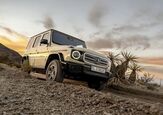
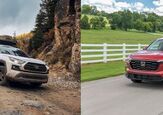
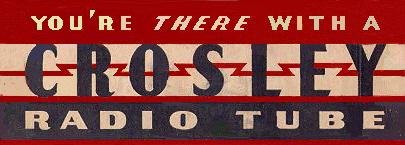
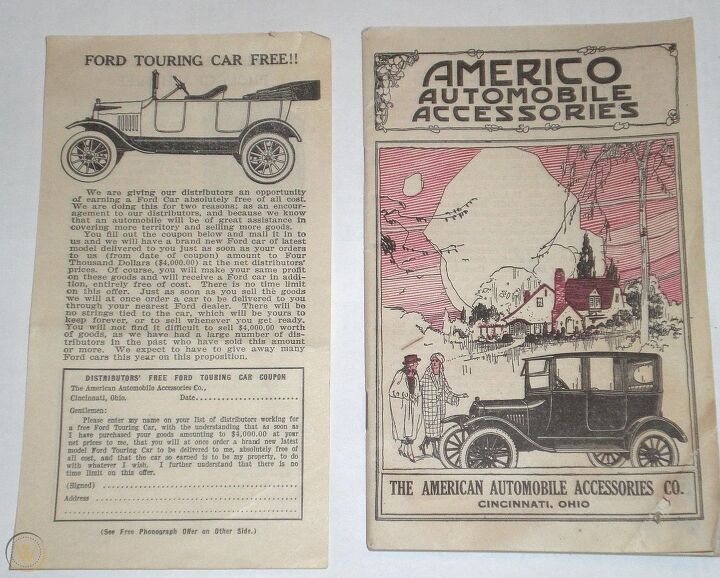

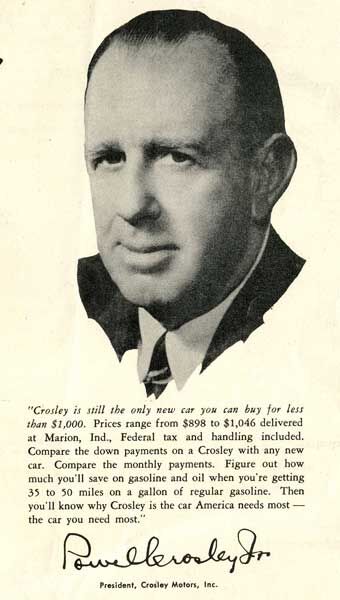
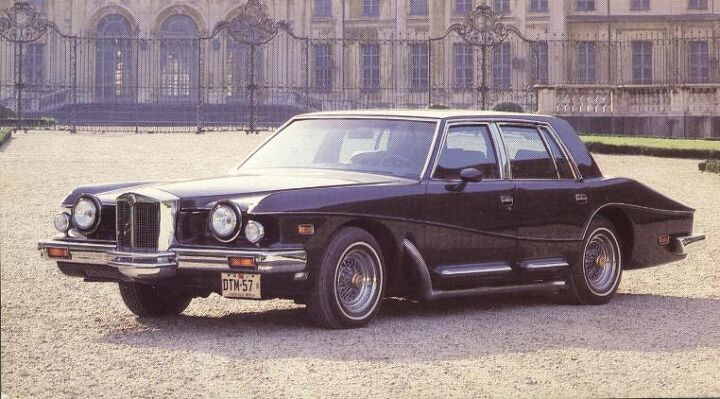
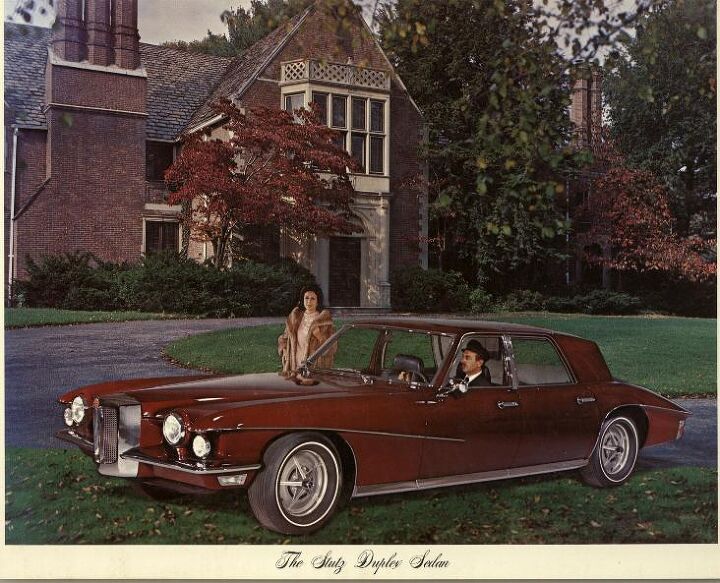
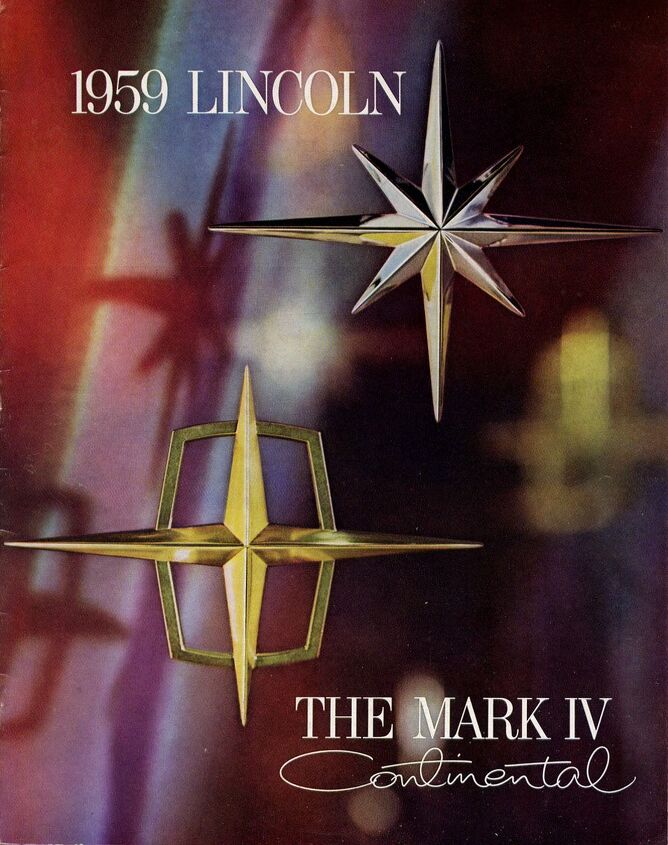
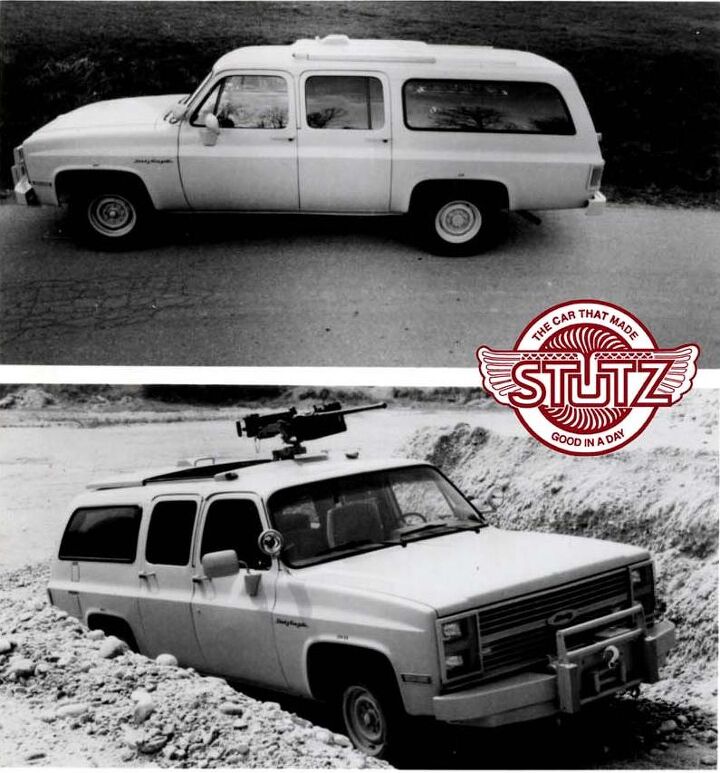
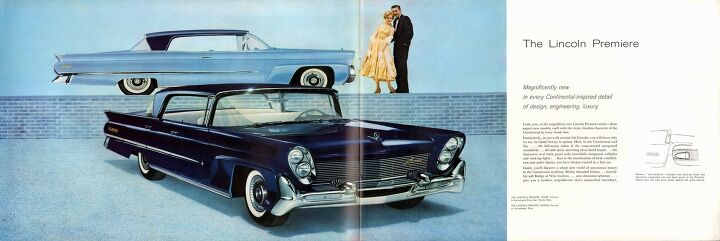
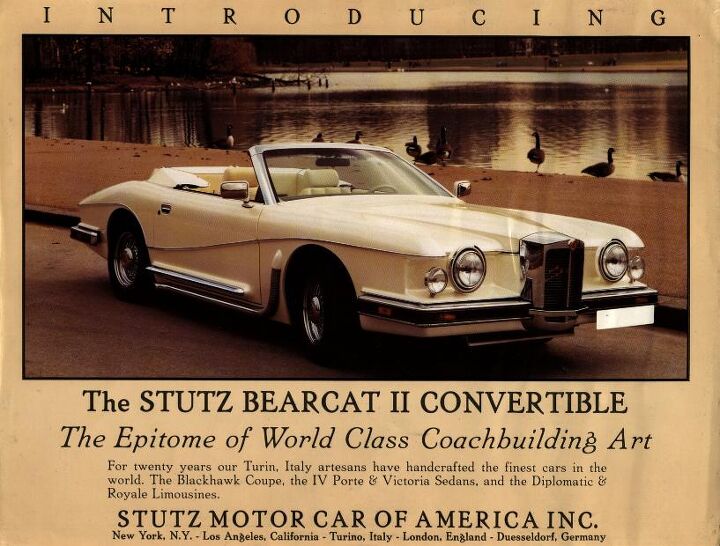

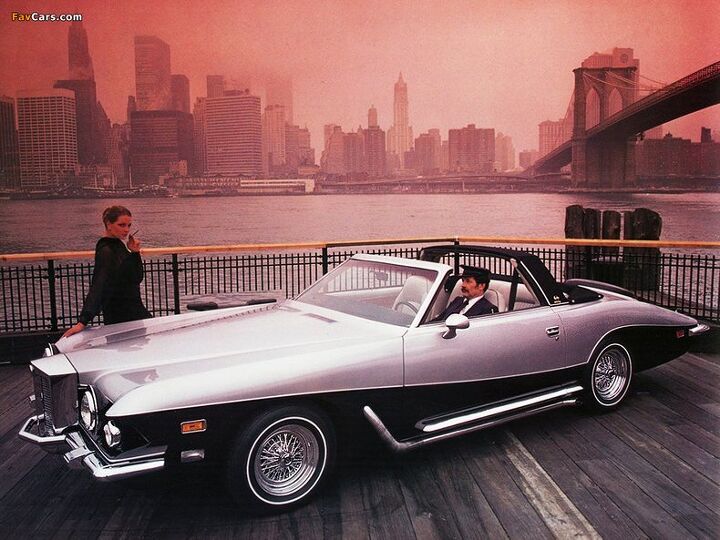
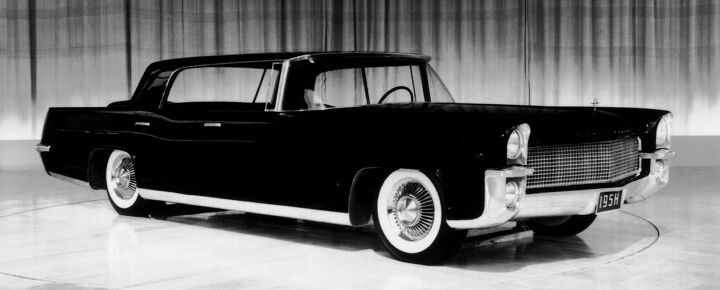
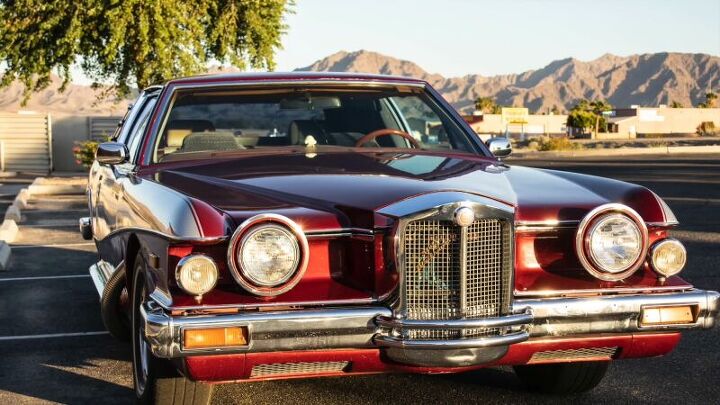
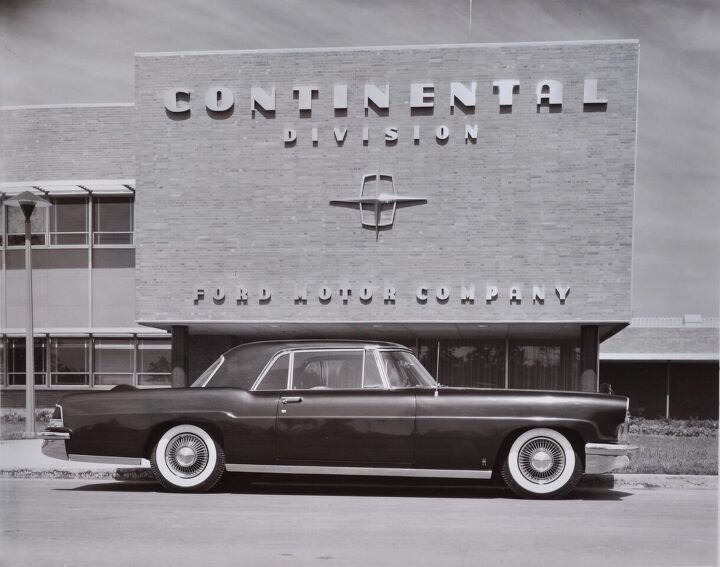












Recent Comments